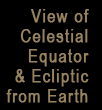
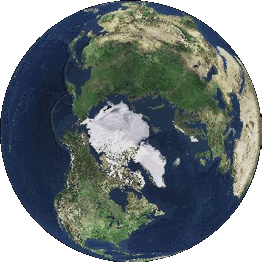

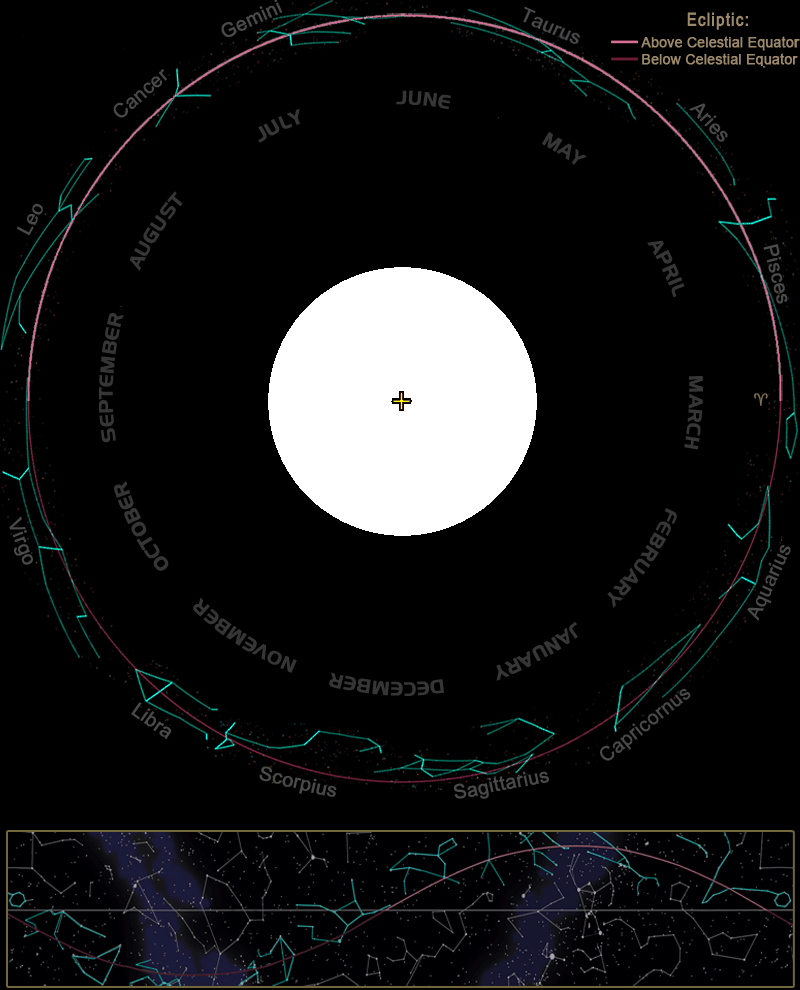


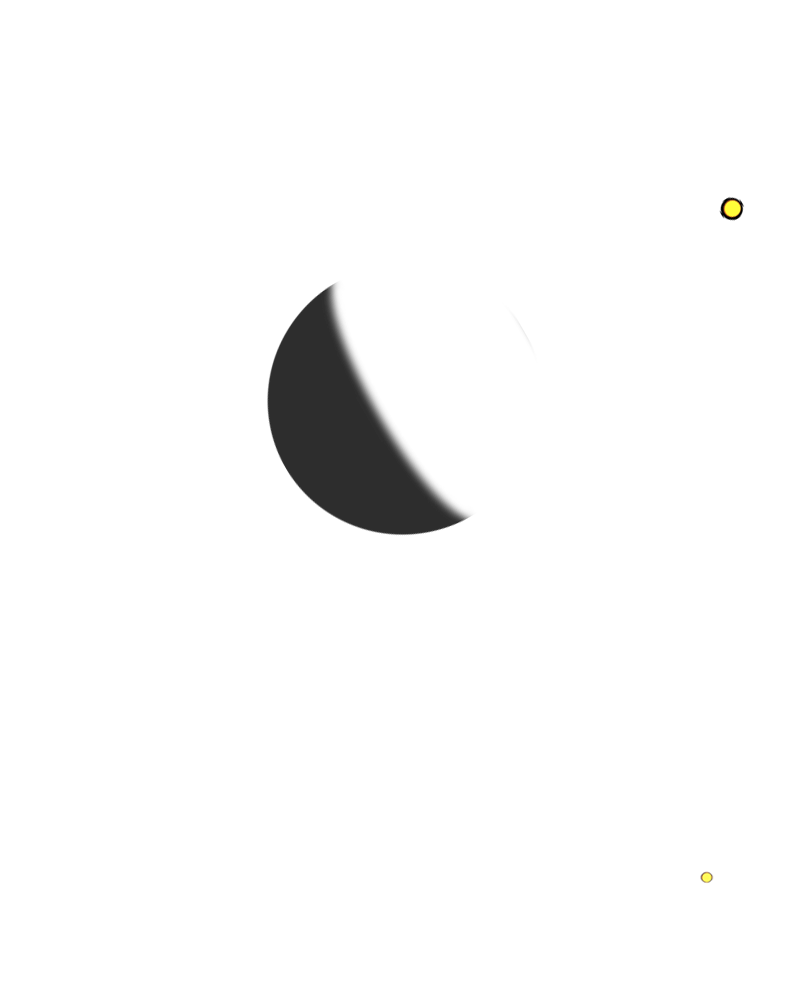








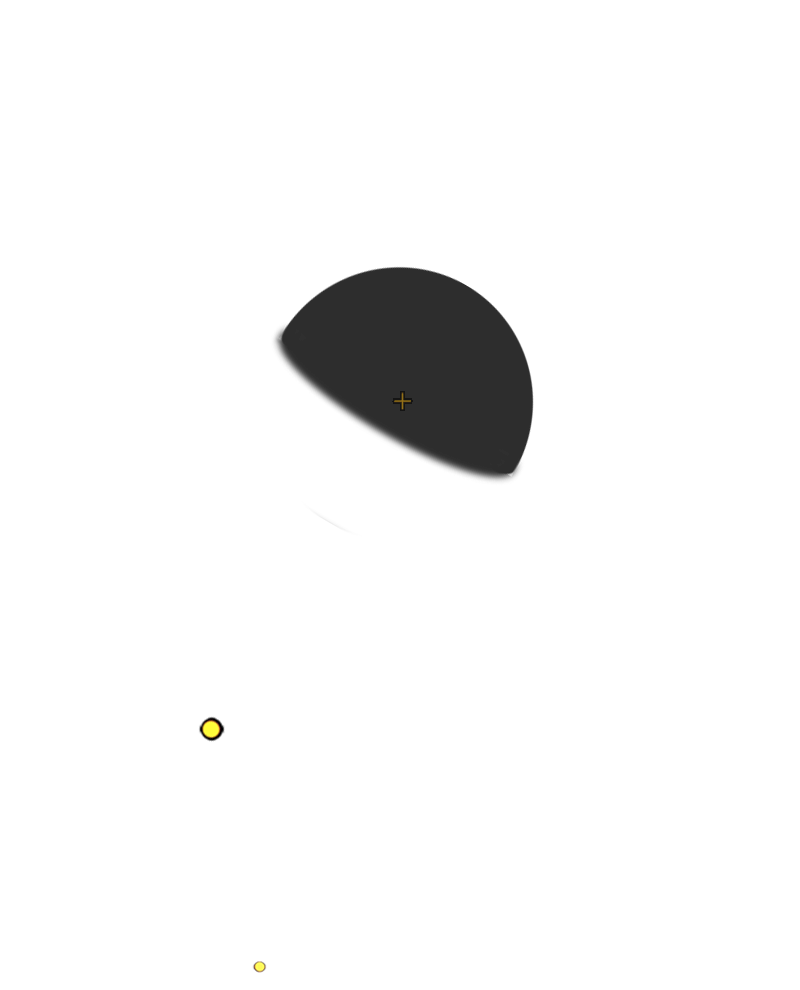


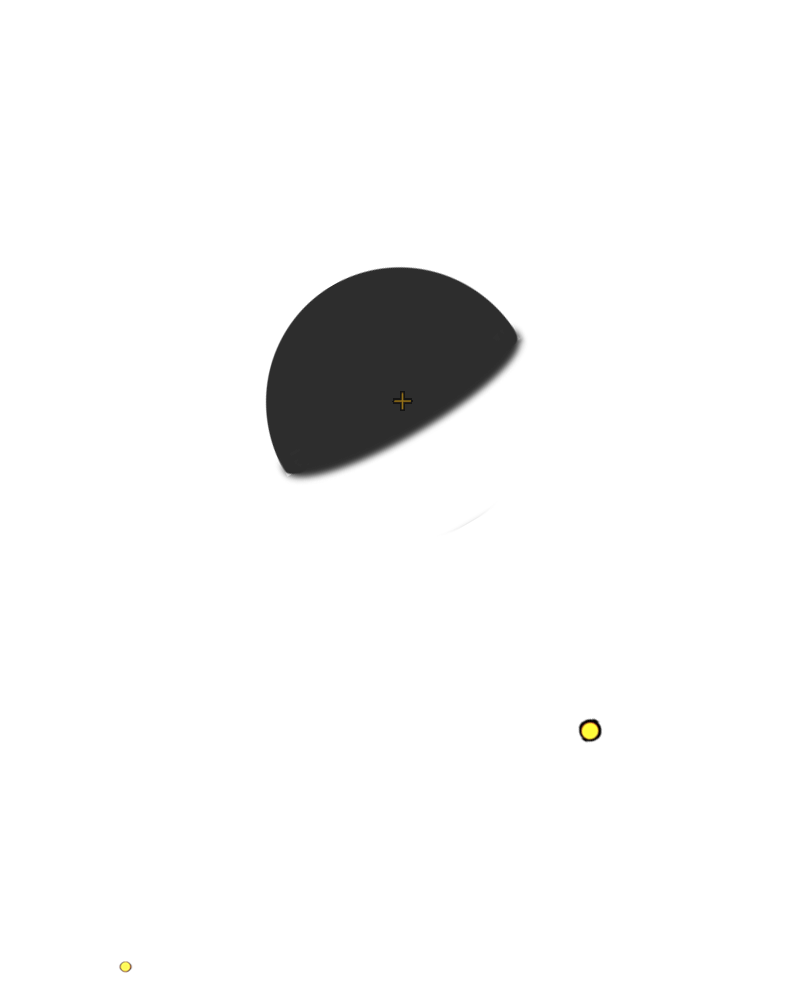



EQUINOXES, SOLSTICES & THE SUN'S APPARENT MOTION
The two linked views above show the Sun's apparent motion through the background of stars from month to month each year, including its passage through the equinoxes and solstices. Of course, it is actually Earth's motion in its yearly orbit around the Sun that makes our parent star "appear" to move continually eastward through the constellations of the Zodiac.
Hover over the times of year in the left column. You will find that running your cursor down and up the list moves the views forward and backward in time respectively. (With touchscreens you may have to tap the various times.) In the upper view, looking down from directly above the North Pole, Earth's changing shadow suggests how our planet's orientation varies month after month in relation to the Sun. It also verifies what we see in the lower view—that the Sun appears above the Celestial Equator for half of the year and below it for the other half. This is also indicated by the Ecliptic, the reddish line that indicates the Sun's path. In both views the Ecliptic is shown lighter where the Sun appears above the Celestial Equator and darker where it is below. As the shadow suggests, the Sun is furthest above (north of) the Celestial Equator at the Summer (June) Solstice, furthest below (south of) it at the Winter (December) Solstice, and directly on the Celestial Equator at the Equinoxes. The lower view confirms this. The seasons mentioned are, of course, those of the Northern Hemisphere (since that is what is shown in the upper view.)
It is worth mentioning that the equinoxes and solstices do not recur at precisely the same time of day each year. In fact, succeeding ones may even take place on different calendar days! Why? It is because Earth does not take an integral number of days to orbit the Sun. Since each orbit actually takes about 365 1/4 days—which is what necessitates leap years—equinoxes and solstices must occur at slightly different times in succeeding calendar years.
Note: it may seem odd to see in the above images that Earth's terminator does not run precisely through the North Pole at the equinoxes, since it is so often depicted that way. But in reality a bit less than half of Earth is ever in darkness, as is explained on our Effects of Twilight, and Earth Tilt, Sunrise & Sunset pages.
How Earth's changing location—in its orbit around the Sun—relates to the equinoxes and solstices is shown in our Moon's Orbital Position & Phase video. In addition, an abbreviated version of the visualization at the top of this page can be viewed with Equinoxes & Solstices through March 2014.
Home Intro News Gallery Sky-Gifts Bonuses Tips
Learning Ctr Help Links Credits Legal Contact Us
© 2007-
2025
by Gary M. Winter. All rights reserved.
Interested in political cartoons and humor?
Check out The HIPPLOMATS™.
SkyMarvels, Sky Marvels, SkyMarvels.com, Equinoxes and Solstices 2013. 2013 Vernal Equinox, 2013 Summer Solstice, 2013 Autumnul Equinox, 2013 Winter Solstice, with Zodiac in background, March Equinox, June Solstice, September Equinox, December Solstice, Sun's Path Along the Ecliptic through the Zodiac, the Changing Shadow on Earth, celestia4all, celestiaforall, CELESTIA, astronomy, space, simulations, animations, downloadable astronomy posters, stars, planets, Inner Planets, Outer Planets, Inferior Planets, Superior Planets, moons, asteroids, comets, Oort Cloud, galaxy, galaxies, Milky Way, Andromeda, globular clusters, binaries, quasars, black holes, supermassive black holes, telescope, telescopes, planetarium, software, freestuff, satellites, add-ons, addons, scripts, eclipses, Solar Eclipses, Lunar Eclipses, Solar Eclipse Finder, Lunar Eclipse Finder, mutual eclipses, transits, occultations, Solar System, CELES-TOOLS, celeSTARrium, CELX, CELX programming, Freebies, multiple views, atronomical unit, light year, parsec, meteors, meteor showers, Perseids, Geminids, Leonids, barycenter, time, Time Zones, tides, alignments, conjunctions, oppositions, seasons, apogees, perigees, aphelion, perihelion, Earth, Luna, Mercury, Venus, Mars, Jupiter, Galilean Moons, Io, Europa, Ganymede, Callisto, Saturn, Titan, rings, Uranus, Neptune, Triton, E-MSpectrum, electromagnetic spectrum, astronaut, equinoxes, solstices, precession, rotation, spin, inclination, tilt, Ecliptic, orbits, ellipse, parabola, hyperbola
